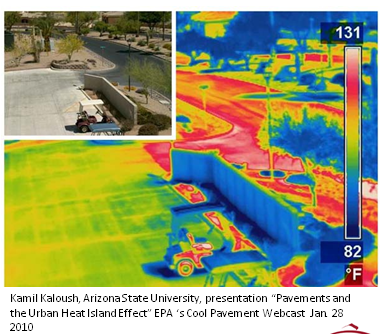Science News
Cool Roofs
July 20, 2010

For over a year, Energy Secretary (and Nobel Prize winner) Steven Chu has been extolling the benefits of white roofs in cooling down not only your home, but also the planet. (A brief video can be seen here.) Now his former colleagues at Lawrence Berkeley National Laboratory have made it official.
In a study published online in the journal Environmental Research Letters, scientists found that light-colored rooftops and roads help cities stay cooler and also cool the world, with the potential of canceling the heating effect that is the equivalent of up to two years of worldwide carbon dioxide emissions.
The logic follows that because white roofs reflect far more of the sun's heat than black ones, buildings with white roofs take on relatively less heat, and thus stay cooler. If the building is air conditioned, less air conditioning will be required, thus saving energy. Additionally, black roofs radiate energy directly into the atmosphere, which is then absorbed by the nearest clouds and ends up trapped by the greenhouse effect, contributing to global warming.
To confirm this, the Berkeley team used a detailed global land surface model from NASA Goddard Space Flight Center, which contained regional information on surface variables, such as topography, evaporation, radiation and temperature, as well as on cloud cover. For the northern hemisphere summer, they found that increasing the reflectivity of roof and pavement materials in cities with a population greater than 1 million would achieve a one-time offset of 57 gigatons (1gigaton equals 1 billion metric tons) of CO2 emissions. That's double the worldwide CO2 emissions in 2006.
Another recent study on cool roofs, led by Keith Oleson at the National Center for Atmospheric Research (NCAR) and published in Geophysical Research Letters, found similar results, using a different model.
The Department of Energy has already begun installing cool roofs to set an example for the rest of us. “Cool roofs are one of the quickest and lowest cost ways we can reduce our global carbon emissions and begin the hard work of slowing climate change,” said Chu. “By demonstrating the benefits of cool roofs on our facilities, the federal government can lead the nation toward more sustainable building practices, while reducing the federal carbon footprint and saving money for taxpayers.”
Photo courtesy ASU National Center of Excellence for SMART Innovations